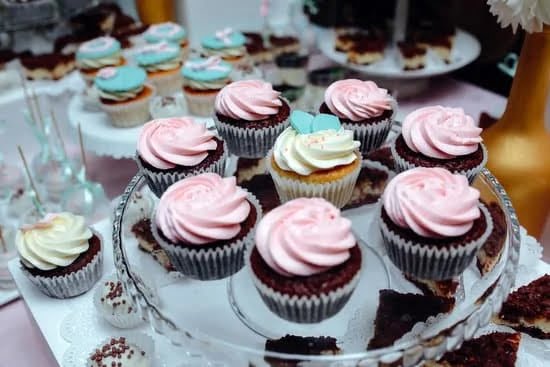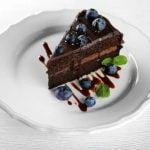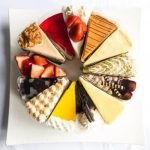Are you looking to add a professional touch to your homemade cakes? Learn how to decorate a cake with a piping bag and master the art of cake decorating. Whether you’re a beginner or an experienced baker, this guide will provide you with the essential tips and techniques to create beautiful designs on your cakes using a piping bag.
Cake decorating is not only about making your desserts look visually appealing but also about expressing your creativity and adding a personal touch to your baked creations. With the right tools, skills, and knowledge, you can turn a simple cake into a stunning masterpiece that will impress your friends and family.
In this comprehensive guide, we will walk you through the process of cake decoration using a piping bag. From understanding different piping tips to troubleshooting common issues, you’ll learn everything you need to know to elevate your cake decorating skills. So, let’s get started on this delicious journey of creativity and mastery.
Getting Started
To get started on decorating a cake with a piping bag, you will need the right supplies and tools. The first thing you will need is a good quality piping bag, which can be made of plastic, silicone, or cloth.
Piping bags come in different sizes, so be sure to choose one that is comfortable for you to hold and work with. You will also need piping tips, which come in various shapes and sizes, and are used to create different designs and textures on the cake.
In addition to piping bags and tips, you will need icing or frosting to fill your piping bag. Make sure your icing is at the right consistency for decorating – it should be smooth and not too runny. You may also want to have some couplers on hand, which are used to change the piping tip without changing the icing.
Other supplies and tools you may need include a turntable to make it easier to decorate all sides of the cake, a spatula for smoothing out the frosting on the cake before decorating, and a bowl of hot water to warm up your icing as needed. Once you have gathered all of these supplies and tools, you will be ready to move on to understanding different piping tips and their uses when decorating a cake.
Overall, gathering these supplies is an essential step in learning how to decorate a cake with a piping bag.
Understanding Different Piping Tips and Their Uses
Piping tips are essential tools for cake decorating that allow you to create a wide variety of designs and textures with icing. Each piping tip has a specific shape and size, which determines the look of the icing as it is piped onto the cake. Understanding the different piping tips and their uses is crucial for achieving professional-looking decorations.
Here are some common types of piping tips and their uses:
- Round Tips: These tips create smooth, even lines of icing and are perfect for writing, outlining, and creating simple designs.
- Star Tips: With small serrated openings, star tips produce textured, ridged designs such as shells, stars, rosettes, and swirls.
- Petal Tips: Shaped like a teardrop, petal tips are ideal for creating flower petals or ruffles on cakes.
- Leaf Tips: As the name suggests, leaf tips are designed for making realistic-looking leaves and foliage from icing.
It’s important to note that piping tip sizes also play a role in the final result. Larger tips produce wider lines of icing while smaller ones create finer details. Experimenting with different piping tips will give you a better understanding of their capabilities and help you achieve the desired decorations for your cakes.
To understand how to decorate a cake with a piping bag effectively, familiarize yourself with different piping tips and their uses. This knowledge will help you choose the right tip for each design element on your cakes. Whether you’re creating intricate patterns or elegant borders, selecting the appropriate piping tip is key to achieving professional results.
Preparing Your Piping Bag and Filling It With Icing
Once you have gathered your cake decorating supplies and have a good understanding of different piping tips and their uses, it’s time to prepare your piping bag and fill it with icing. This step is crucial in achieving beautiful and intricate designs on your cake. Here’s how to decorate a cake with a piping bag:
First, choose the right piping bag for your needs. Piping bags can be made of plastic, parchment paper, or reusable cloth material. Select a piping bag that feels comfortable in your hand and is easy to control. Once you have chosen your bag, fit it with the desired piping tip.
Next, prepare your icing. Whether you’re using buttercream, royal icing, or any other type of icing, make sure it is at the right consistency for decorating. If the icing is too stiff, try adding a small amount of milk or water until it reaches the desired consistency. If the icing is too runny, add more powdered sugar until it thickens.
Now it’s time to fill the piping bag with icing. To do this, fold down the top of the piping bag about halfway and spoon in the prepared icing. Then unfold the top of the bag and twist it to close, making sure there are no air pockets or gaps between the icing and the tip. Once filled, hold the piping bag firmly and use gentle pressure to guide the icing through the tip as you decorate your cake.
Mastering this step is essential in achieving professional-looking cake decorations. With practice and patience, you will soon be able to effortlessly create beautiful borders, intricate designs, and stunning details on your cakes using a piping bag.
Basic Piping Techniques
When it comes to decorating a cake with a piping bag, mastering basic piping techniques is essential for creating beautiful designs. Whether you’re a beginner or looking to brush up on your skills, learning how to create borders and outlines with a piping bag is a great place to start.
Choosing the Right Piping Tip
Before you begin piping borders and outlines on your cake, it’s important to choose the right piping tip for the job. For creating straight borders and outlines, a round tip is typically used. If you want to add more intricate details, such as scalloped borders or lace patterns, consider using a specialty piping tip.
Creating Borders and Outlines
To create a border around the edges of your cake, hold the piping bag at a 90-degree angle to the surface of the cake. Apply even pressure to the bag as you pipe frosting in a continuous motion around the edge of the cake. For outlining shapes or creating intricate designs, gently squeeze the piping bag while carefully guiding the tip along the surface of the cake.
Practicing Proper Technique
Like any skill, mastering basic piping techniques takes practice. Start by practicing on a flat surface, such as parchment paper or a cutting board, before moving on to decorating an actual cake. This will help you get a feel for controlling the pressure and movement of the piping bag. With enough practice, you’ll be able to create perfect borders and outlines on your cakes every time.
By mastering these basic piping techniques for creating borders and outlines with a piping bag, you’ll be well on your way to taking your cake decorating skills to the next level. Practice different designs and incorporate various icing colors to create stunning cakes that are sure to impress at any occasion.
Advanced Piping Techniques
Now that you have mastered the basic piping techniques for creating borders and outlines on your cake, it’s time to take your cake decorating skills to the next level by learning how to make beautiful flowers, rosettes, and swirls with a piping bag. These advanced piping techniques will add a stunning and professional touch to your cakes, making them perfect for any special occasion.
To create these intricate designs, you will need to have the right piping tips and a steady hand. Some of the most commonly used tips for creating flowers include the rose tip, leaf tip, and petal tip. Each of these tips can be used to create different types of flowers with varying levels of detail. Additionally, the star tip is essential for creating rosettes and swirls that add a whimsical and elegant touch to your cake.
Here are some steps on how to decorate a cake with a piping bag using advanced techniques:
- Select the appropriate piping tip for the design you want to create
- Hold the piping bag at a 90-degree angle above the surface of the cake
- Squeeze steadily while moving your hand in a circular motion to create flowers or rosettes
- Practice on parchment paper before decorating your cake to perfect your technique
Once you have mastered these advanced piping techniques, you can use them to elevate the look of any cake. Whether you are decorating a birthday cake, wedding cake, or cupcakes, adding delicate flowers, intricate rosettes, or elegant swirls will impress your friends and family with your cake decorating skills. Keep practicing and experimenting with different designs to find what works best for you and your unique style.
Troubleshooting Common Piping Bag Issues
When decorating a cake with a piping bag, it’s important to be familiar with common issues that may arise and how to troubleshoot them. One of the most common problems is air bubbles in the icing, which can cause uneven flow and disrupt the design. To prevent this, gently tap the piping bag on your work surface to release any trapped air before you begin decorating.
Another issue that decorators often face is inconsistent pressure when piping. This can result in varying thickness of lines or uneven designs. To address this problem, practice applying even pressure on the piping bag while maintaining a steady hand movement. It’s also helpful to hold the bag at a 90-degree angle to the surface of the cake for better control.
Additionally, clogging of the piping tip can occur if there are lumps or solid pieces in the icing. To avoid this, make sure to use smooth and well-mixed icing. If clogging happens during decorating, you can remove the tip and clean it with warm water before continuing.
When troubleshooting these common piping bag issues, it’s essential to stay patient and practice regularly to improve your technique. With time and experience, you’ll become more adept at identifying and addressing these challenges.
| Common Piping Bag Issues | Troubleshooting Tips |
|---|---|
| Air bubbles in icing | Gently tap the piping bag to release trapped air before decorating. |
| Inconsistent pressure | Practice applying even pressure on the piping bag while holding it at a 90-degree angle for better control. |
| Clogging of piping tip | Use well-mixed icing to avoid lumps and clean the tip with warm water if clogging occurs. |
Adding Finishing Touches
Choosing the Right Edible Decorations
When it comes to adding the final touches to your beautifully piped cake, edible decorations can take your creation to the next level. From shimmering edible pearls and fondant cutouts to delicate sugar flowers and custom-made chocolate decorations, there are endless options for adding a touch of elegance and creativity to your cake. Before choosing your edible decorations, consider the theme of your cake and the overall look you want to achieve.
Using Colorful Sprinkles for a Fun Twist
If you’re decorating a cake for a festive occasion or simply want to add a pop of color, sprinkles are a fun and versatile option. Whether you opt for classic rainbow sprinkles, metallic confetti dragees, or themed sprinkles related to an event or holiday, these tiny confections can add texture, visual interest, and a playful element to your cake design.
When using sprinkles, consider incorporating them into specific areas of your piping design or scattering them across the entire surface for a whimsical effect.
Applying Edible Glitter for a Touch of Glamour
For special occasions such as weddings or milestone birthdays, edible glitter can add a touch of glamour and sophistication to your cake. Whether you choose sparkling gold or silver edible glitter or opt for vibrant colored options in shades that complement your cake design, this subtle yet stunning addition can elevate the overall look of your creation. When applying edible glitter, lightly brush it on with a clean, dry brush for precise placement and shimmering impact.
By incorporating these finishing touches into your cake decorating process after using piping techniques with a piping bag adds depth and personality to any dessert creation. With careful consideration of color coordination and thematic relevance, these additions will provide an extra layer of creativity that will impress anyone who lays eyes on the end result.
Conclusion
In conclusion, mastering the art of cake decorating with a piping bag requires patience, practice, and attention to detail. By gathering the right supplies, familiarizing yourself with different piping tips, and learning basic and advanced techniques, you can elevate your cake decorating skills to professional level. Remember to take your time when creating borders, outlines, flowers, rosettes, and swirls – consistency and steady hand movements are key.
When facing common piping bag issues such as air bubbles or clogs, don’t get discouraged. Troubleshooting these problems is all part of the learning process. Additionally, consider adding finishing touches to your decorated cakes by using edible decorations such as fondant shapes or colorful sprinkles.
With dedication and a willingness to learn from mistakes, you can become a skilled cake decorator in no time. Don’t be afraid to experiment with different designs and styles – the more you practice how to decorate a cake with a piping bag, the more confident you will become in your abilities. So go ahead and let your creativity flow as you transform simple cakes into stunning works of art.

Welcome to our cake decorating blog! My name is Destiny Flores, and I am the proud owner of a cake decorating business named Cake Karma. Our mission is to provide delicious, beautiful cakes for all occasions. We specialize in creating custom cakes that are tailored specifically to each customer’s individual needs and tastes.





